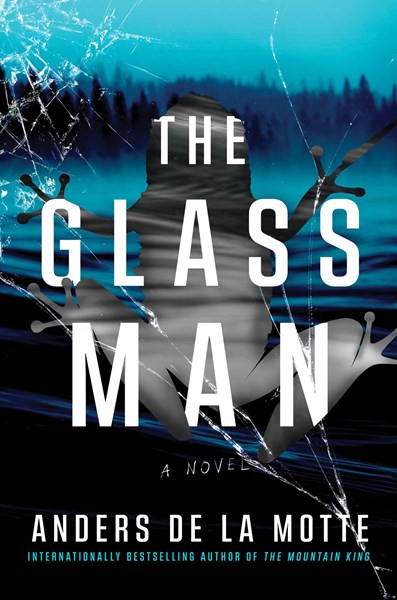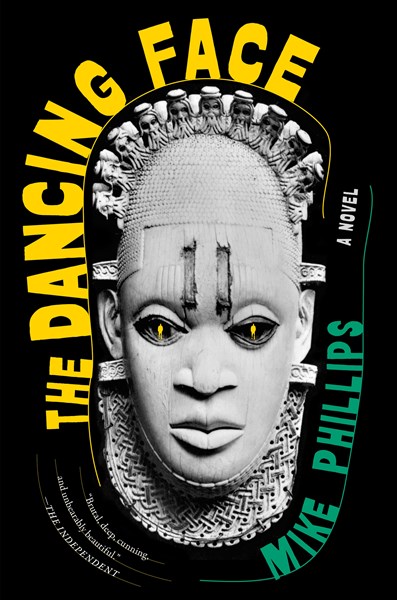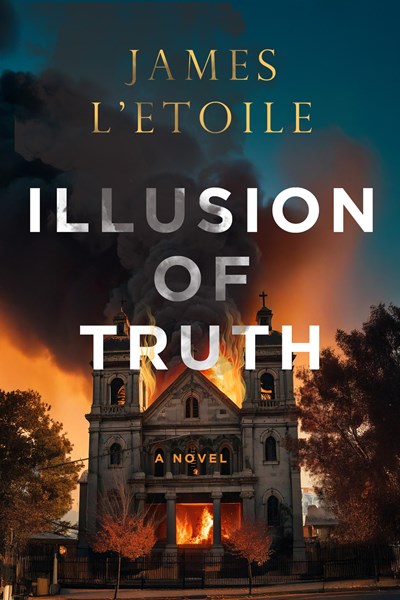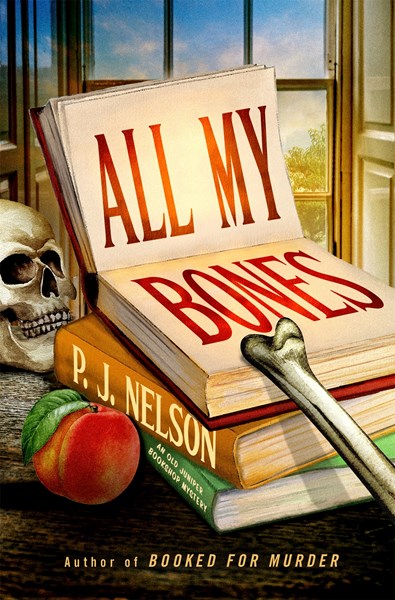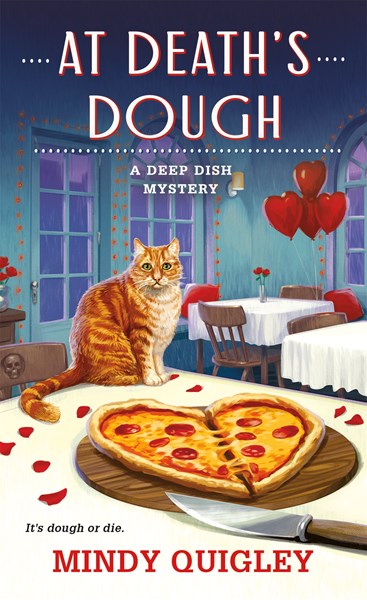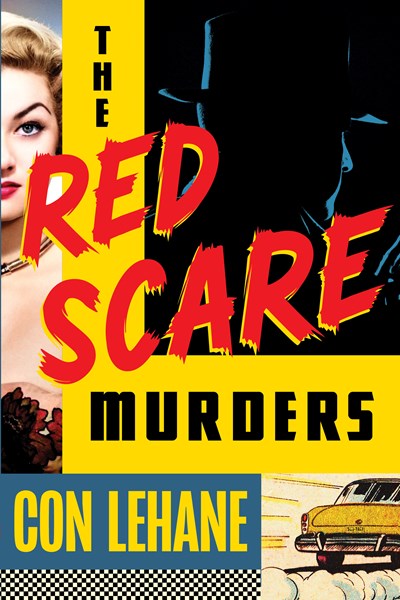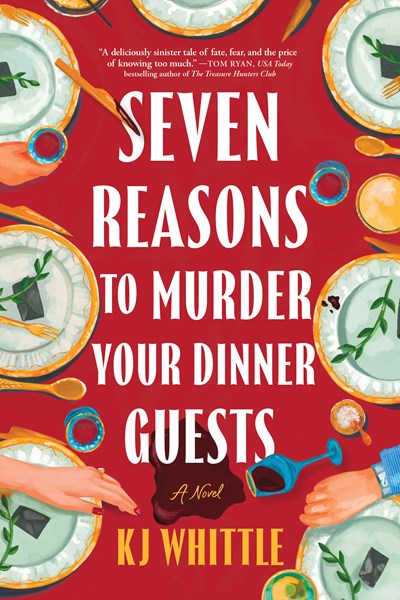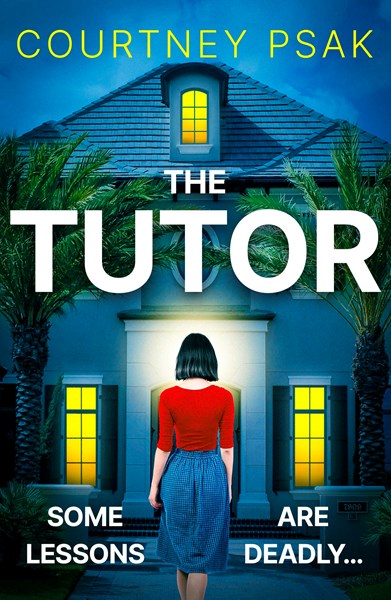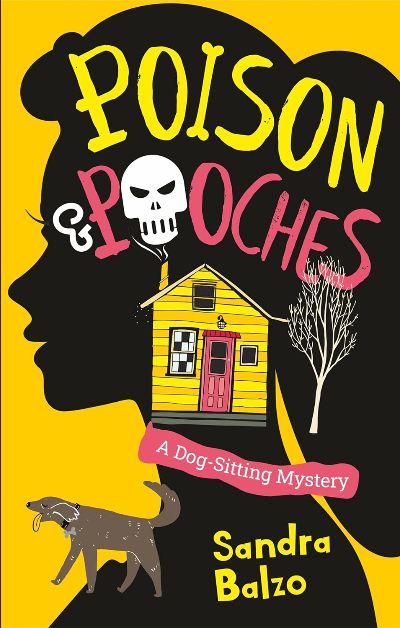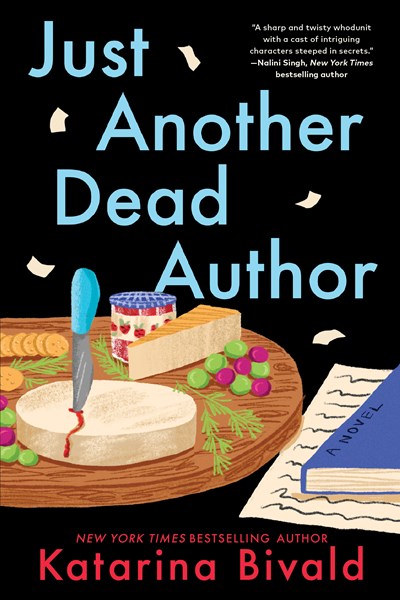Opening shortly after the traumatic events of The Mountain King, the second entry in de la Motte’s Asker series finds Leo Asker settling back into her job as head of the Malmö police’s obscure Resources Department (aka The Department of Lost Souls) when the estranged survivalist father she calls “Prepper Per” contacts her after 15 years of silence. A body has been found near his farm, and he will be arrested shortly as the primary suspect. Claiming a frame-up, Per threatens violence if Leo refuses to help him. Having survived her father’s attempt to kill her years ago, she knows Per means business. Meanwhile, childhood friend Martin Hill, recovering from injuries sustained from helping Leo on her last case, has moved to the remote and eerie lakeside estate of the Irving family to write the history of the medical technology company founded by paterfamilias Gunnar Irving. Long obsessed with the rumors (UFOs, red-eyed aliens) behind the Irvings’ success, Martin is thrilled at the chance to investigate further. But he soon discovers dark secrets that might be connected to Leo’s probe. Once again, the author has penned an atmospheric, fast-paced thriller that features a creepy serial killer and provides plenty of chills for the dog days of summer. Leo and Martin make a great sleuthing team, and Scandinavian noir readers will eagerly await their next adventure.
Mystery & Detective
The darkness of this novel—which was published in 1997 in Britian but is now seeing its first U.S. publication—is paired with an urgency: things must be made right. The England-based Committee for Reparations to Africa has been “veering between sycophancy and rage according to the circumstances” in persuading the British that African artworks stolen during Colonial rule must be returned. The only result is undisturbed exhibits in British museums, so now Gus, a university professor, has decided to make a statement. In partnership with a steel-willed, rich Nigerian man, Dr. Okigbo, he will steal a mask (one that causes “an aura around his nerves” and “The taste of a smell. A ghost in the mouth”) from a renowned collection. He’ll hold it for a ransom to be paid to Africa, but more to stir political fallout. (It’s better than bombing the museum, his initial idea.) Of course, nothing goes to plan, and while the aftermath gets more twisted and scarier, confounding issues are introduced. The mask should eventually be given up, but not to “some bunch of evil dictators.” It might never be possible to persuade the British to do anything (“Nothing to do with us, old boy”). And are Black English people, such as Gus, authentic enough to be involved in this effort? There’s lots to think about here with characters who shake up assumptions and stereotypes along the way.
Detective Emily Hunter of the Sacramento police department must stop someone targeting fellow officers, and it’s personal, in L’Etoile’s latest thriller. Her boyfriend, Brian Conner, is one of several officers sent to stop a riot near a church, but when they arrive, they see nobody around. Shortly after inspecting the area, the silence is pierced by two explosions, one under a police vehicle and the other from a donation box near the church entrance. Conner saves the life of one of the officers but takes the brunt of the blast. Hunter vows to find out who’s responsible for putting Conner on death’s door. Her pursuit of justice will entangle her with her boss, the mayor, and other fellow officers, while she constantly worries that Conner, if he lives, will never be the same. There’s a reason L’Etoile has been winning awards for his writing, and this series highlights why. Like the best of Michael Connelly, L’Etoile has created characters readers care about while also crafting a twisty and compelling story. Fans of police procedurals and heart-stopping thrillers should consider L’Etoile an essential addition to their reading pile.
Quirky and quick-witted, this second mystery in the Old Juniper series manages to be both action packed and full of the rich details that make up small-town life. Madeline Brimley is back in her hometown of Enigma, Georgia (“A little do-nothing town in the worst part of the third-worst state in the country”). A former actor, Madeline inherited her aunt’s home/bookstore and has no problem making new friends, although her bestie would be Gloria Coleman, the Episcopal priest who lives right across the street. When a corpse is found in the front yard of the bookstore, of all places, it turns out to be that of the rich and nasty Bea Glassie. And while no one in town can stand Bea, it’s Gloria who takes the heat for killing her and ends up in the slammer—while Madeline and friends are cavorting about town, interviewing suspects, cooking dinner, and in general living it up. Madeline even manages to get herself a boyfriend (a poet and horticulturalist. How cute is that?) Gradually the mystery starts to fall in place, characters step up to their roles, and the world eventually settles back into a familiar place.
As Geneva Bay, WI is mostly a summer resort, making ends meet for the town’s small businesses in the winter is no easy task. Delilah and Son, gourmet pizza establishment, is no exception. The history of the place as a vacation spot for the Chicago mob is a mixed blessing, but when the Chamber of Commerce comes up with a “Gangsters of Geneva Bay” map and self-guided tour, Delilah is sort of obliged to sign on, even though it upsets cop boyfriend Calvin Capone, who does his best to play down his nominal connection to the mob. That she and her Aunt Biz discover frozen human remains while ice fishing only makes things worse. We have local and mob history combined with the overflow of ugly divorces, bad police work, family feuds, and a juicy bit of danger to liven the plot, along with trying to make sure that Valentines Day reservations will make up for the rest of the slow month to make this a fun addition to an entertaining series. And of course there are recipes at the end.
“You know what a witch hunt is? It’s when a big lie declaring someone anathema to the prevailing orthodoxy gets a head of steam…,” explains narrator Mick Mulligan. It’s July 1950, and the country is in the grips of anti-communist “Red Scare” fever. Blacklisted from his job as a Disney cartoonist, Mick is back in New York, divorced, broke, and starting as a private detective to pay child support. But his first case may prove impossible to solve. A year and half earlier, Irwin Johnson, a despised cab company owner, was shot to death in his garage office. Evidence pointed to Black cab driver and Communist Party member Harold Williams, who had led a wildcat strike against Johnson’s company a month before the murder. Tried and convicted, Harold sits in Sing Sing prison, awaiting execution on August 4. Now, labor leader Duke Rogowski wants Mick to find new evidence to exonerate Harold. The problem is that Mick only has 15 days. In the best hardboiled noir tradition, our gumshoe doggedly pursues clues and reluctant witnesses like sexy femme fatale widow Eva Johnson (think Lana Turner) while fending off Mob goons named Moose. If Lehane’s (Murder at the College Library) red-herring plot twists don’t always make sense, his gritty portrait of 1950s New York rings true. While there is only one actual murder, the novel vividly depicts the McCarthyism that destroyed so many lives. A treat for noir and historical mystery fans.
When Vivienne, an admittedly dowdy and somewhat bitter middle-aged magazine editor, receives a mysterious invitation to a dinner party, she almost throws it away. Reconsidering, she goes to the elusive address to find Serendipity, which appears to be a pop-up fine dining experience. None of the other six guests has any relation to her, or one another, it seems. Readers get to know them through their actions and words, and it would be easy to start guessing what is to come, but the highlight of the dinner is when each finds an envelope at his or her place setting. Janet, the most spontaneous (and likely most drunk) of the guests, tears hers open to find a card that states You will die age 44, and she is just weeks from her 45th birthday. Fear, accusations, and incredulity sweep across the group, and then, dismissing it as a publicity stunt, they depart. But then the words on the cards start coming true. As the guests tell their stories and admit to their sins, readers see Vivienne emerge as a caring and clever amateur sleuth who finally has a family to protect. A terrific addition to the current trend of If you knew you were going to die, how would you live your life? novels.
The tutor is Isabel, a young woman who’s just started her new job at a rich Florida private school. Readers know that she’s angling to meet the Caldwells, a family whose son, James, attends the school; we follow along as she visits their palatial home for the first time, snooping while there—but what’s she up to? In the meantime, we meet Evelyn, James’s mean-spirited grandmother. Her daughter-in-law Rose, the female lead here, can’t do anything right, and in Evelyn’s view is a gold digger who needs to be out of the picture. The man between these two women is too busy with his finance work to be of any help, and the situation disintegrates as Isabel reveals the reason she wants to know the Caldwells and Rose finds out that her mother-in-law is rumored to have too many mysterious deaths in her tony circle. With secrets and twists coming fast, not to mention emotional stakes that build to fever pitch, this is psychological fiction at its best.
A charming novel with community at its heart. Arial Mayes Kingston has inherited a guest house in Monterey, California. Only in her mid-twenties, Arial turns to the one thing she knows how to do well: walk and sit dogs. O.K., so she is able to drum up only one client: the very handsome Golden named Monty (fans of Laurien Berenson and David Rosenfelt will enjoy meeting Monty). But she is able to make new acquaintances in the neighborhood while walking about with Monty, and Balzo spends plenty of time on character development. In fact, we’re nearly a quarter of the way through the book before a male corpse shows up, discovered, of all places, in the floorboards beneath Arial’s guest house. Fortunately Arial is in the clear—she hadn’t even moved to California when the body had been buried. But boy, talk about an incentive for gossip. Between the local book group, the vet, the neighborhood detective, and several more, we have enough speculation to keep the questions of who killed the victim and who buried him very much alive. When the murderer is finally revealed, it is truly a shock worth waiting for. Looking forward to more from Arial and Monty
Swedish author Bivald gives readers another delightful twisty tale (following The Murders in Great Diddling) with well-known mystery author Berit Gardner in the lead role, along with a diverse and quirky cast of characters, most of whom are writers, agents, and publishers attending a retreat outside Lyon, France. Against the backdrop of the somewhat dilapidated yet beautiful Chateau des Livres, the envy and adoration amongst the attendees begins to merge, even as they continue to workshop “Dramatic Plot Twists” and “Portrait of a Writer on Fire.” When John Wright, headliner and bestselling author, dies in the front row during Berit’s welcoming address, nearly everyone is a suspect. A series of reveals follows, including two Mrs. Wrights, a partial manuscript, and a kitchen crush. When another particularly annoying attendee is found stabbed, the stakes are raised. With the help of sharp-eyed observers and a DCI Ahmed, a friend from England, Berit and her rep Sarah, who happens to be the daughter of John Wright’s agent, start to work out whom the murderer might be, much to the chagrin of local authority Commissaire Roche. Fans of Kemper Donovan’s Ghostwriter series will eat this up. A fun romp through the publishing industry is icing on the cake!

